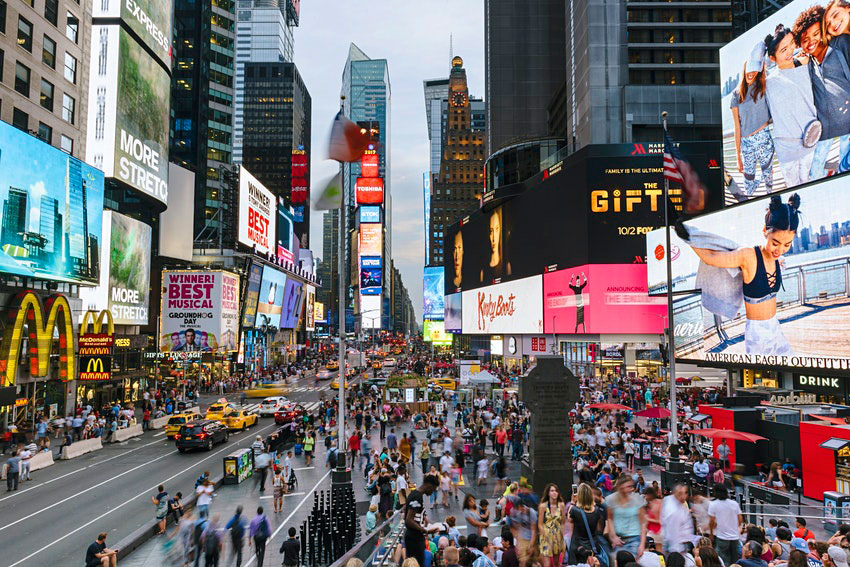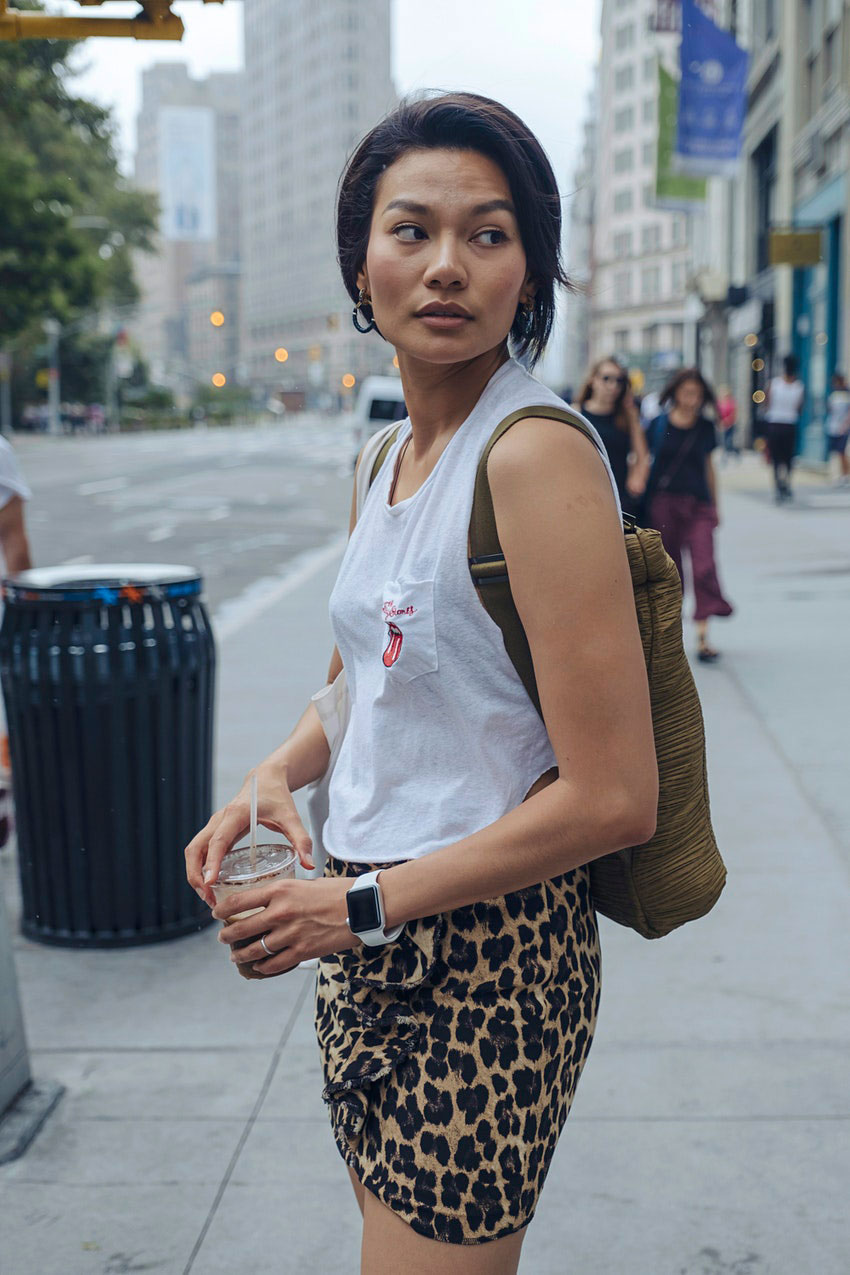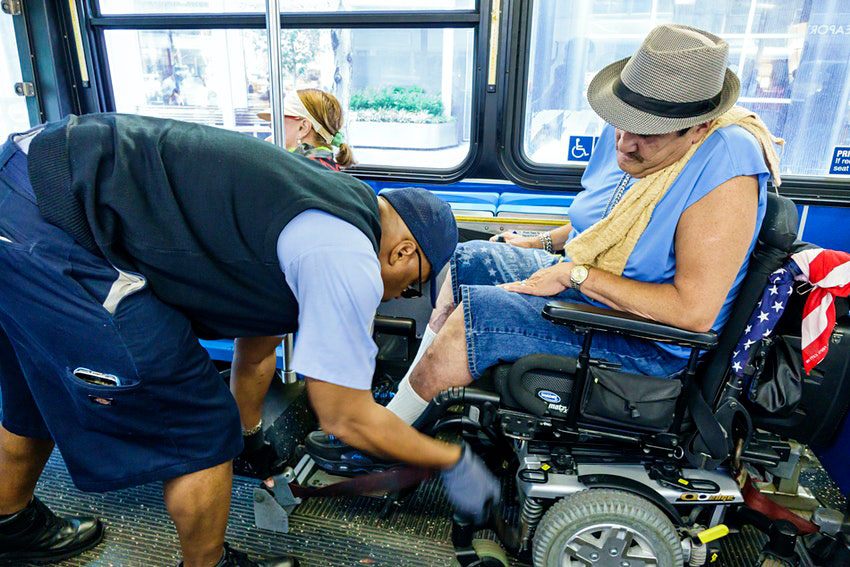
What you should know before traveling to New York City
TripFalcon August 26, 2021
Last Update: 2021-08-26 08:57:06New York City’s world-class cultural institutions, incredible diversity and glamorous aesthetic make it a truly remarkable and one-of-a-kind destination to visit. As the most populous city in the United States with over 8.5 million people, taking a minute to jot down a few important public safety measures, etiquette tips and unspoken social rules is the magic ingredient to making sure one is at ease, relaxed and ready to take on the Big Apple.
What to wear in New York City
A day in New York can easily swing from a walk through cobblestoned downtown neighborhoods which require casual wear and sneakers, to a ballet performance and glamorous night out which requires upscale attire – bring both.
 Don't be afraid to serve a few looks on a trip to New York City © Guillaume Gaudet / Lonely Planet
Don't be afraid to serve a few looks on a trip to New York City © Guillaume Gaudet / Lonely PlanetIt is always better to be overdressed for the event than underdressed. And, when in doubt, wear all black for a guaranteed New York-chic monochrome look.
When possible, rely on your credit and debit cards and don’t bring excessive amounts of cash. And, as always, trust yourself and your intuition in all scenarios.
Eating and drinking
Renowned for its diverse dining options and exceptional restaurant culture, tableside manners and etiquette can run the gamut. Be respectful of your neighbors while dining and be sure to always tip servers – 20% is just enough but not too much – 25% for excellent service. Always dress to the occasion. If it’s a casual restaurant, stay casual. If it’s upscale, up the glamour.
A restaurant will not deny you entry for wrong attire, but the appropriate dress is a sign of goodwill and respect for the restaurant’s patrons, staff, and hard-working chefs.
New York drinking water is fully potable and safe to drink from all faucets and water fountains citywide. At restaurants, drinking water is always free of charge and your server will refill your glass repeatedly at no cost.
Alcohol and marijuana
New York banned all smoking in bars and restaurants in 1995, excluding cigar bars that serve recreational cigar smokers as their main source of income.
Recreational and medicinal marijuana use is legal in New York City and visitors can smoke marijuana (and carry up to three ounces) anywhere where smoking tobacco is allowed. However, smoking of any kind is prohibited in public parks. Consumption or possession of an open container of alcohol in public places is prohibited and could result in a fine.
Tips for tourists
Gender discrimination and all discriminatory harassment based on race or origin is strictly illegal in New York City. Catcalling and incidents of discriminatory harassment should be reported by calling "311."
Though crime and disproportionate policing is largely linked to areas far from tourism regions, a September 2020 study by researchers at New York’s renowned John Jay School of Criminal Justice found that African American city-dwellers were twice as likely to be stopped by police than any other group. Likewise, crimes against Asian-American New Yorkers were up 353% from 2020 to 2021. As in any major urban area, watch out for aggression from potentially unpredictable people.
Interactions with police
Due to isolated incidents of summer crime in the midtown area in recent years, police presence has significantly increased in the Times Square, Midtown, Hell’s Kitchen and Hudson Yards neighborhoods which adds to the overall feeling of safety and security in these regions. If you feel unsafe in any given scenario and want to call the police – “911” is the number to call for both police and ambulance service. And, as always, be kind and respectful to your fellow citizens and to law enforcement.

A all five boroughs of the city have their work cut out for them with regards to true and equal access for everyone © Jeff Greenberg / Universal Images Group via Getty
Accessibility
New York City is a concrete jungle and, as a result, most visitors and residents get around on the subway or by walking. The majority of inhabitants don’t own a car and the city still has a very long way to go with regard to providing large-scale access to the physically disabled.
Wheelchair-friendly subway stations occur, but are unique to high-traffic hubs and many of the city’s 472 subway stations lack elevators and ramps. One hundred and twenty-four stations have full access to visitors with a walking impediment and, although a valiant effort, all five boroughs of the city have their work cut out for them with regards to true and equal access for the individuals with physical disabilities.
Street smarts and subway safety
Paying attention to all aspects of street and pedestrian activity is paramount. The city’s drivers and bikers are notorious for fast driving. Obey all walk signs and watch bike lanes vigilantly for oncoming riders.
Below street level, 5.5 million riders use the subway daily so crowded platforms require extra precaution. Never enter the subway tracks under any circumstances even if you drop something – they are live wired with high-voltage electricity.
Always stand a few feet or more from the subway platform edge.
Panhandlers are also common on the subways and it is illegal to give them cash. However, I often see homeless outreach services and churches perusing the cars offering sandwiches, snacks, and drinks to the truly needy on the subways – it is beautiful to witness.
It is also the height of city etiquette to always offer your seat to anyone who is elderly, pregnant or in any way physically disabled. As the classic New York Metro Transit Authority quote states, “Courtesy is contagious and it begins with you.”

